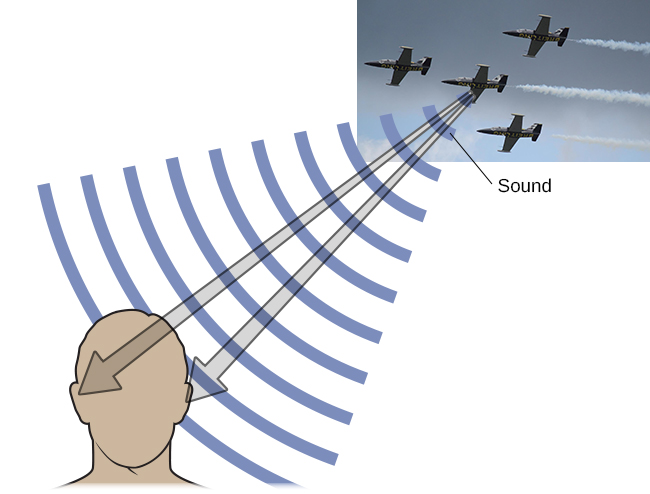Hearing in Complex Environments
62
Learning Objectives
Understand why auditory localization is difficult.
Be able to describe the coordinate system for auditory scene analysis: azimuth, elevation, and distance.
Auditory localization is difficult to do for many reasons. The human ear has to work really hard to make sense out of auditory information that is mixed in with many other sounds at the same time. It requires being able to determine where sound is coming from. This one task is extremely difficult, but also a crucial part of hearing. Without that, humans would likely make many mistakes about the auditory information coming in. There is a coordinate system that helps humans to do this, which includes azimuth, elevation, and distance.
Azimuth can be explained as the angle to the right or left of what is straight ahead, moving in an arc parallel to the ground. (The median plane is a vertical plane cutting through your head, perpendicular to “straight ahead”.) This helps to identify if sound is coming from the left or right side.
Elevation is the exact opposite of azimuth. It is the angle above or below the horizontal plane, which helps to identify if sound is coming from above or below.
Distance is the more obvious part of the system. It is how far or near the sound is to a person, which helps to determine the source of the sound as well.
The coordinate system above works together in order for humans to get the most information out of sound. But another central part of spatial hearing is monaural and binaural hearing, which is one-eared versus two-eared hearing. This is a key component in being able to determine where sound is coming from. Hearing with one ear can be beneficial in identifying where a sound is coming from because it tells someone which side of the body the sound is coming from. Hearing with two ears is beneficial as well because this can give one a sense of if the sound is coming from above, below, directly in front of, or behind the person.

Exercises
- What part of the coordinate system helps discern if a sound is to the left, right or middle?
A. Azimuth
B. Elevation
C. Horizontal
D. Distance - What part of the coordinate system helps discern if a sound is coming from above or below?
A. Distance
B. Azimuth
C. Vertical
D. Elevation - What part of the coordinate system deciphers how far or near a sound is?
A. Length
B. Elevation
C. Distance
D. Azimuth
Answer Key:
- A
- D
- C
Provided by: University of Minnesota
License: CC BY 4.0

